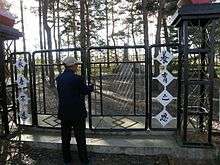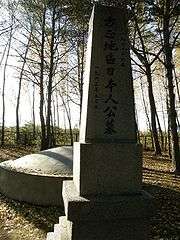Japanese orphans in China


Japanese orphans in China consist primarily of children left behind by Japanese families following the Japanese repatriation from Huludao in the aftermath of World War II. According to Chinese government figures, roughly 2,800 Japanese children were left behind in China after the war, 90% in Inner Mongolia and northeast China (then Manchukuo). They were taken in by rural Chinese families.
In 1980, the orphans began returning to Japan; however, they faced discrimination due to their lack of Japanese language skills and encountered difficulties in maintaining steady employment. As of August 2004, 2,476 orphans had settled in Japan, according to the figures of the Japanese Ministry of Labor.[1] They receive monthly payments of ¥20,000-30,000 from the Japanese government. In 2003, 612 orphans filed a lawsuit against the Japanese government, claiming that it bears responsibility for their having been left behind; each plaintiff sought ¥33 million.[2]
Besides the orphans, the majority of other Japanese left behind in China were women. These Japanese women mostly married Chinese men and became known as "stranded war wives" (zanryu fujin).[3] Because they had children with Chinese men, the women were not allowed to bring their Chinese families back with them to Japan; most of them stayed. Japanese law only allowed children with Japanese fathers to become Japanese citizens.
References
- ↑ "Forgotten plight of foster parents". Xinhua News. 2005-04-22. Retrieved 2007-11-30.
- ↑ "Japanese 'war orphans' sue". BBC News. 2004-09-24. Retrieved 2007-11-30.
- ↑ Left Behind: Japan's Wartime Defeat and the Stranded Women of Manchukuo
Further reading
- Chan, Yeeshan (2011), Abandoned Japanese in Postwar Manchuria: The Lives of War Orphans and Wives in Two Countries, Japan Anthropology Workshop Series, Routledge, ISBN 978-0-415-59181-2
- Itoh, Mayumi (2010), Japanese War Orphans in Manchuria: Forgotten Victims of World War II, Palgrave Macmillan, ISBN 978-0-230-62281-4